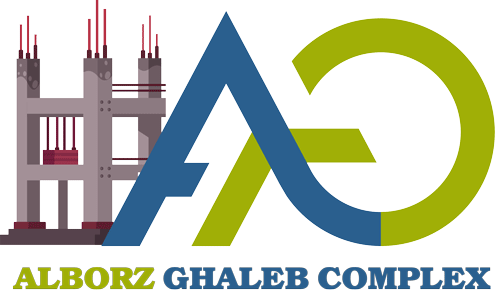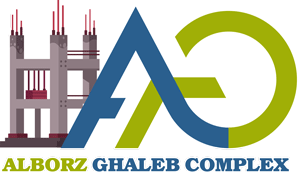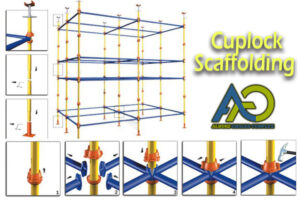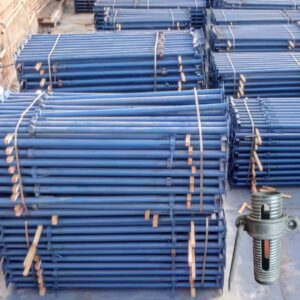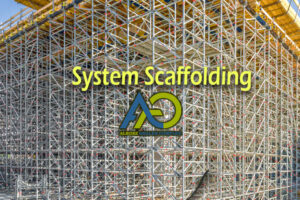Introduction to Cement
Cement is a type of building material, a soft powder with high adhesive properties, used as a construction binder. This crucial substance, with millions of tons produced annually in the country for various uses, sets in air and even underwater, gaining greater strength over time with unlimited durability.
On its own, cement does not possess significant resistance to pressure. However, when mixed with sand, gravel, and water to form mortar or concrete, it develops the desired strength over time. In other words, cements are adhesive materials capable of bonding particles together, creating a unified mass from the constituent elements.
Scientific Definition of Cement
Scientifically, cement is a compound of calcium oxide (lime) combined with other oxides such as aluminum oxide, silicon oxide, and iron oxide. It has an affinity for water and gradually hardens when exposed to air or submerged underwater, achieving strength. This hardening is not like the drying of clay when it loses water; rather, it is a chemical reaction that results in the formation of a new material. Once hardened, cement cannot soften again with water.
Meaning and Origin of the Word “Cement”
The term “cement” is often used broadly to describe all types of binding materials, but in a more precise sense, it refers to sticky substances used in buildings and structures within civil engineering. The hardening and strengthening of cement occur through hydration (combination with water), a chemical reaction between cement and water that forms microscopic crystals or a gel-like substance. Due to its ability to set even underwater, construction cement is often called hydraulic cement. The word “cement” is derived from the Greek term caementum, meaning “to break stone into pieces,” as used in Roman mortar, though it does not directly relate to the binding material itself.
History of Cement
Cement in Ancient Times
Humans have known cement since ancient times, gradually recognizing its role and importance, striving daily to build stronger structures than before. Late Stone Age humans, who survived by hunting and gathering food and roamed vast areas in search of sustenance, lived in temporary shelters. The agricultural revolution, dating back to around 10,000 BC, provided the motivation for permanent settlement and the construction of homes. No longer following prey or herds from place to place, humans stayed in one location to tend their fields. In the Middle East, remains of entire villages with circular dwellings called “Tholoi” have been found, featuring walls made of compacted clay.
Early Mortars and Hydraulic Cement
The mortar used to bond stones and pottery was a mixture of sand, lime, and water. For parts of structures submerged underwater, a siliceous material called “pozzolana” was added, making the mortar hard and resistant to water. In fact, the origin of hydraulic cement (water-reactive) traces back to ancient Greece and Rome. The materials used included lime and a type of volcanic ash that reacted slowly with water, forming a solid mass. This sticky substance formed the mortar and concrete used in Rome over two thousand years ago, as well as subsequent construction projects in Western Europe. They employed this mortar in building towers, ramparts, roads, cisterns, bathhouses, temples, palaces, and fortresses.
Pozzolana and the Roots of Modern Cement
The volcanic ash, extracted from a mine near the city of “Pozzola” (modern-day Italy), was rich in aluminum silicate, and the famous “pozzolana” cement of ancient Rome took its name from this source. Today, the terms pozzolana or pozzolan refer either to cement itself or to any soft material containing aluminum silicate that reacts with lime in the presence of water to form cement. The finest cement from antiquity is credited to the Romans.
Cement in the Modern Era
The scientific production of cement began in the eighteenth century. In 1756, John Smeaton was tasked with rebuilding the small Eddystone Lighthouse in the English Channel off the coast of Cornwall, England. Through his experiments, he successfully created a material resembling Portland stone by combining impure limestone and clay and firing them. Further experience was gained in subsequent years by burning various mixtures of limestone and clay.
Invention of Portland Cement
In 1824, Joseph Aspdin achieved a superior material by firing a 1:3 mixture of limestone and clay. In his method, the firing in kilns reached such high temperatures that the molten material cooled into fine particles. This resulting soft powder, when mixed with water, hardened after a few hours. The product closely resembled the limestone extracted from the Portland Island quarry in England, earning it the name “Portland cement”—a name that persists for modern Portland cements today.
First Structure Built with Portland Cement
The first structure constructed using this type of cement was the British Parliament building, erected between 1840 and 1852. Portland cement production rapidly spread across European countries and North America. Today, Portland cement remains the most widely produced cement globally, with broader applications.
Scientific and Industrial Development of Cement
Later, Dr. Bock, president of the American Cement Standards Research Institute and known as the “Father of Cement,” detailed the primary components of cement, which were validated by experts. Since then, advanced nations have continued research and development into new cement types, improving product quality and advancing cement production technology. Today, cement is considered the largest industrial product by weight in human history.
History of the Cement Industry in Iran
Cement in Ancient Iran
Iranians, too, have long been familiar with the properties of clay and limestone as the primary raw materials for cement. They prepared a mortar from a mixture of water, lime, ash, and clay, known in local dialects as “sarooj,” “saro,” or other names. This mortar was used for strength and waterproofing in the construction of bathhouses, cisterns, ponds, and significant buildings. Structures such as the Dez Dam on the Karun River, built during the reign of Shapour II, the Band-e Amir constructed under Azud al-Dowleh Daylami, and ancient cisterns utilized similar cement-like compounds.
Start of Industrial Cement Production in Iran
Cement production in Iran began in 1933 with the commissioning of the Rey Cement Factory, boasting a daily capacity of 100 tons. Over time, as the country progressed and developed, the role and importance of this industry, along with cement production and consumption, have steadily increased.
Current State of Iran’s Cement Industry
Currently, Iran has 35 cement production plants with an annual capacity of 32.576 million tons, with 10 additional factories under construction. With the implementation of these projects, the country’s cement production capacity is expected to rise to 114,000 tons per day and 37.6 million tons per year by 2002. In 1999, Iran produced 1.39% of the world’s cement, securing the 15th rank among global cement producers and 8th in Asia. Iran’s share of global cement production has grown steadily, from 0.04% in 1950 to 1.42% in 1998.
Raw Materials for Portland Cement
Main Components of Cement
Portland cement primarily consists of lime (calcium oxide), combined with silica (silicon oxide) and alumina (aluminum oxide). The required lime is derived from calcareous raw materials, while other oxides come from clay-based materials.
Supplementary Raw Materials
Other raw materials, such as silica soil, iron oxide, and bauxite, can also be used in smaller quantities to achieve the desired composition. Another raw material, gypsum, is added up to about 5% during the grinding of the fired cement “clinker” to control its setting time.
Extraction of Raw Materials
The raw materials used in cement production, if in the form of hard rock like limestone, layered sedimentary rocks, or certain clays, are either mined or obtained through blasting. Some deposits are extracted using underground methods. Softer materials like gypsum and clay are directly separated from the quarry wall by miners. Extracted materials are transported to stone crushers and grinders using trucks, train wagons, or conveyor belts. Limestone and clay form the primary raw materials for Portland cement production, with other materials used as additives or regulators.
Cement Production
Classification of the Cement Industry
According to international classification, the cement industry falls under the group of non-metallic mineral industries.
Cement Production Methods
There are generally three methods for cement production:
1- Wet Method
2- Semi-Wet Method
3- Dry Method
The type of method depends on the concentration of raw materials entering the kiln and the amount of water added to them. The most significant and widely used method globally is the dry method, which also forms the basis of the firing systems in most cement factories in our country.
Dry Production Process
In the dry cement production process, dry raw materials are ground and fed into the kiln as dry powder. In the semi-wet process, raw materials are first ground dry, then formed into pellets before being fed into the kiln. In the wet process, raw materials are fed into the kiln in a wet state.
Cement Production Line Stages
The cement production line begins at the quarry and ends at the packing and loading facility. In the dry production method, raw materials such as limestone, clay, marl (calcareous clay), gypsum, iron ore, and silica stone are extracted from quarries. Extracting materials like limestone, iron ore, and gypsum requires drilling and blasting with dynamite or explosives. Materials like clay and marl do not require blasting and are stockpiled using bulldozers or similar equipment.
Four Main Stages of Portland Cement Production (Dry Method)
a- Crushing and Grinding Raw Materials
b- Combining Materials in Proper Proportions
c- Firing the Prepared Mixture in a Kiln (Firing System)
d- Grinding (Softening) the Fired Product Known as “Clinker”
a- Crushing and Grinding Raw Materials
Initially, raw materials must be crushed to sizes of less than about ten millimeters. Stone crushers or grinders are used to crush limestone, iron ore, silica stone, and large clay clods or fragments. If necessary, and if the materials have high moisture content, they must be dried.
After crushing and drying, in modern systems, primary raw materials are preliminarily mixed with secondary materials in the required proportions and stored in designated silos before being sent to “raw material mills” for pulverization. In the dry cement production method, it is essential that raw materials are powdered before entering the kiln. To prevent clumping and reduce material stickiness, the raw material powder should be dried and dehumidified as much as possible before being sent to storage silos.
b- Combining Materials in Proper Proportions
The initial chemical composition required for a specific type of cement is achieved through selective extraction and control of raw materials fed into the crusher and grinder. More precise control is obtained by preparing two or more batches of raw mix with slightly different chemical compositions.
In the dry process, these mixtures are stored in silos, while in the wet process, slurry tanks are used. To ensure thorough mixing of dry materials in the silo, compressed air is injected into the tank, causing vigorous agitation and blending. In the wet process, slurry tanks are stirred using mechanical devices, dry air, or both.
The slurry, containing 35 to 45 percent water, is sometimes filtered, reducing its water content by 20 to 30 percent. The filtered material is then fed into the kiln, reducing the fuel consumption needed for firing. In the raw material mills, the final adjustment of the raw mix, known as “kiln feed,” is performed, resulting in a fine powder containing the necessary components, ready to be fed into the kiln.
In cement factories, ball mills and roller mills are more commonly used. After the raw materials are pulverized in these mills, the resulting powder is stored in “raw material silos.” A key factor in ensuring consistent kiln operation and improving clinker and cement quality is the uniformity of the kiln feed composition, thorough mixing, and homogeneity. To achieve optimal homogenization of raw materials, storage silos equipped with “pneumatic” systems are used. Raw materials enter the storage silos from the top, undergo necessary adjustments, and are discharged from the bottom into the kiln.
c- Firing the Prepared Mixture in a Kiln (Firing System)
The earliest kilns used to fire cement were vertical, bottle-shaped kilns. These were followed by chamber kilns and then continuous cylindrical kilns. However, the primary equipment for cement firing today is the rotary cylindrical kiln.
The cement firing system comprises three parts: the “preheater,” the “kiln,” and the “cooler.” The preheater’s role is to remove residual surface moisture from the raw materials, release crystalline water, preliminarily decompose silicates, and calcine (lime) some of the carbonates present in the raw materials.
The main firing process occurs in the kiln. Cement kilns are large metal cylinders, with their length and diameter proportional to the factory’s capacity. This cylinder, inclined at about 3 to 4 percent, rests on several roller-equipped bases and rotates. After passing through the preheater, raw materials enter the kiln from one end and, due to the slope and rotational movement, move toward the kiln’s exit and firing zone.
At the kiln’s end, a burner is installed, using various fuels to create a high-temperature environment exceeding 1400°C. To protect the kiln body from this intense heat, different zones are lined with refractory bricks, concrete, and refractory masses. The product exiting the firing system, called “clinker,” appears as gray or brown granules, with approximately 800 kilocalories of thermal energy consumed per kilogram of clinker produced.
Clinker exiting the kiln has a temperature of about 1000 to 1200°C. Recovering this heat and the difficulty of handling hot clinker necessitate its cooling. Another critical aspect of clinker cooling is completing the formation of clinker crystals and enhancing its quality. The cooling process is performed by a cooler device.
The produced clinker, or firing system product, is stored in silos, warehouses, or designated halls before entering the cement mill. Alongside the growth and technological advancement of the cement industry, today’s world witnesses kilns with daily production capacities of 5,000 tons.
d- Grinding the Fired Product (Clinker)
Ball mills are used to pulverize “clinker.” At this stage of the production line, along with the clinker fed into the cement mill, a small amount of raw gypsum is also added. The addition of gypsum to the cement mixture controls the clinker’s setting time. The product resulting from grinding clinker and raw gypsum in the cement mill is called “cement.”
The produced cement is stored in cement silos and then extracted using an “airslide” (which uses air pressure to direct and pump cement to the desired location) from the silos into the hoppers or bins of the loading equipment.
Loading is done in two forms: bagged or bulk. The loading facility, located at the end of the production line, may have various loading capabilities depending on the factory’s geographic location, such as loading into trucks, ships, or railcars, either in bags or bulk.
Quality Control
Role of the Laboratory in Cement Production
The laboratory and quality control unit oversees all stages of cement production, from the start of the production line to the loading facility, conducting precise monitoring and continuous calculations to ensure the production of high-quality cement that meets required standards.
Quality Tests
In this regard, various chemical and physical tests are performed, including determining the quantities of different oxides, measuring gypsum content, assessing cement setting time, volume stability, compressive strength, tensile strength, flexural strength, fineness, and roughness, among others, by quality control staff. Modern cement factories today are equipped with advanced process control equipment. In some plants, raw materials are automatically sampled, and computers control and calculate the raw mix composition.
Physical Properties of Cement
The physical properties of cement primarily include fineness, setting time, soundness, and strength.
Cement Fineness
It should be noted that an overly fine cement is not always economically or technically advantageous. The cost of grinding and the effects of excessive fineness on other properties, such as increased gypsum requirements for setting control, workability of fresh concrete, and other factors, must also be considered. Fineness is a key property of cement, typically determined by specific surface area (m²/kg) in standards. Various common methods are used worldwide to measure cement fineness. Iran’s national standard No. 390 specifies the determination of cement fineness.
Cement Setting Time
The term “setting” refers to the hardening of cement paste, transitioning from a liquid to a solid state. Setting occurs due to the hydration of C3S and C2A, accompanied by a rise in the cement paste’s temperature. Initial setting relates to a rapid temperature increase, while final setting corresponds to the ultimate temperature. The duration of cement setting decreases with rising temperatures, though tests have shown that at around 30°C, a reverse effect can be observed. At lower temperatures, cement setting slows down.
Applications of Cement
Diverse Uses of Cement
Today, cement has a wide range of uses and applications, depending on its various types, across different fields. Cement can be used alone, as a pure grouting material, but its primary and most common use is in mortar and concrete, where it is mixed with inert materials known as aggregates.
Mortar and Concrete
Mortar consists of cement mixed with sand or crushed stone with a diameter of approximately 5 millimeters. Concrete is a combination of cement, sand, or other small aggregates, but when poured in large volumes, such as for dam construction, aggregates up to 19 to 25 millimeters are also used. Concrete is utilized for various construction purposes.
Precast Products
Portland cement is used in producing bricks, mosaics, blocks, roof beams, railway ties, and other products shaped under pressure in molds. These products are manufactured in specialized workshops and supplied ready for installation. For instance, tools like System Scaffolding and Prop Jacks for Construction play a significant role in construction processes involving concrete and cement.
Importance of Concrete Today
Given the extensive use of concrete in today’s world, cement production holds particular importance. In developed countries, the annual per capita cement increase is approximately one ton. The aggregates or cement used, the specific quality of the concrete, or its preparation method determine the type of concrete.
Factors Affecting Concrete Quality
In ordinary concrete used in construction, cement properties are primarily defined by the water-to-cement ratio. The lower the water content, the stronger the concrete. The mix must contain enough water to ensure complete encapsulation of each aggregate particle by the cement paste, filling the spaces between aggregates, and providing sufficient workability for pouring and spreading. Another factor in concrete durability is the cement-to-aggregate ratio (expressed as a 1:3 ratio of cement to fine and coarse aggregates). Where extremely strong concrete is needed, the aggregate proportion will be lower.
Concrete strength is measured by the force applied per square inch in pounds or per square centimeter in kilograms required to crush concrete of a given hardness or age.
Environmental Impact on Concrete
Environmental factors such as temperature and humidity affect concrete strength. If not fully dried, its tensile strength becomes uneven, and if improperly hardened, it cannot withstand these stresses. In a process known as curing, concrete is kept moist for a period after pouring to slow the shrinkage during hardening. Low temperatures also negatively impact its strength. To counter this, additives like calcium chloride are added to cement, accelerating the hardening process and generating sufficient heat to offset relatively low temperatures. In extremely cold weather, large-scale concrete pouring is avoided.
Reinforced Concrete
Concrete hardened around metal (usually steel) is called “reinforced concrete” or “reinforced cement concrete.” Its invention is generally attributed to Joseph Monier, a Parisian gardener who made pots and pipes for gardens reinforced with metal mesh. He patented his invention in 1867.
Reinforcing steel, which may take the form of bars, rods, or mesh, enhances concrete’s tensile strength. Plain concrete cannot easily resist tensile stresses from wind, earthquakes, vibrations, and other bending forces, making it unsuitable for many construction tasks.
In reinforced concrete, the tensile strength of steel and the compressive strength of concrete combine to create a material capable of withstanding all types of extreme stresses over large areas. Beyond its potential for high strength and ability to be molded into any shape, concrete is also fire-resistant, making it one of the most widely used construction materials globally. Concrete structures exhibit good resistance to fire, enduring up to 24 hours.
Components of Concrete
Main Constituents of Concrete
- Cement: Accounts for about 7 to 15 percent of concrete volume.
- Water: Accounts for about 14 to 21 percent of concrete volume.
- Aggregates (Sand and Gravel): Account for about 60 to 75 percent of concrete volume.
- Air: In non-aerated concrete, air volume ranges from 0.5 to 3 percent; in aerated concrete, it ranges from 4 to 8 percent.
Role of Cement in Concrete
Cement’s role in concrete is solely to bind aggregates together and does not directly contribute to strength or load-bearing capacity. Thus, good concrete is one that, when tested in a lab, breaks through the aggregates rather than the cement (binder). Cement is supplied to the market in bulk or bagged forms and is used in numerous construction and infrastructure projects.
Wide Range of Concrete Applications
From small rooms to towering skyscrapers, from tiny ponds to massive port facilities, from swimming pools to robust dams storing vast water reserves, from small bridges over streams to enormous tunnels beneath seabeds, from sidewalks to advanced highways, metro lines, expansive international airports, and from bunkers to vast weapon and military storage facilities—all reflect cement’s critical role in human life.
Storing Cement
Cement Storage Conditions
Efforts must always be made to keep cement away from moisture, as it readily absorbs water, and even humid air can ruin it entirely.
Storing Bulk Cement
When storing cement in bulk, conditions must ensure the storage floor beneath the cement is completely dry. A layer of dry sand can be spread on the floor to prevent moisture penetration from below. Additionally, covering the cement with plastic is advisable.
Storing Bagged Cement
Bagged cement is stored on wooden platforms of specific shapes and sizes called “pallets.” These pallets are at least 10 centimeters off the ground, with a maximum of eight rows of cement bags stacked on them. Between pallets, each holding around fifty bags, a minimum distance of 0.5 meters is required for air circulation. Under proper conditions, bagged cement can be stored for up to one year.
The Future of the Cement Industry
Scientists’ Predictions
Scientists predict a bright future for the cement industry, describing concrete made from cement as the most significant material of this century. Indeed, cement can be seen as a binding agent cheaper than any other industrial adhesive, essential to human life.
Future Developments
Given cement’s outstanding properties and its environmental harmlessness, the variety of cement types will continue to grow, with increasing demand for customized products in the future. Alongside these developments, further changes in the cement industry’s structure will emerge. Even if no fundamental changes occur in cement’s chemical and physical systems in the medium term, the trend toward regionalized production and distribution calls for technological advancements.
Challenges and Opportunities
The cement industry enjoys a promising future as a connector of construction materials. However, factors such as internal industry competition, competition with other construction materials entering the market, pressure from environmental regulations, and increasing globalization will compel the cement industry to reduce costs, ensure quality, and enhance environmental protection. The range of factory outputs must align with technical innovations.
If we compare today’s cement industry with that of a century ago, statistics and data reveal the technological distance traveled over this period. The heat consumption for the firing process has dropped from 1900 kilocalories per kilogram of clinker a hundred years ago to 700 kilocalories per kilogram today.
